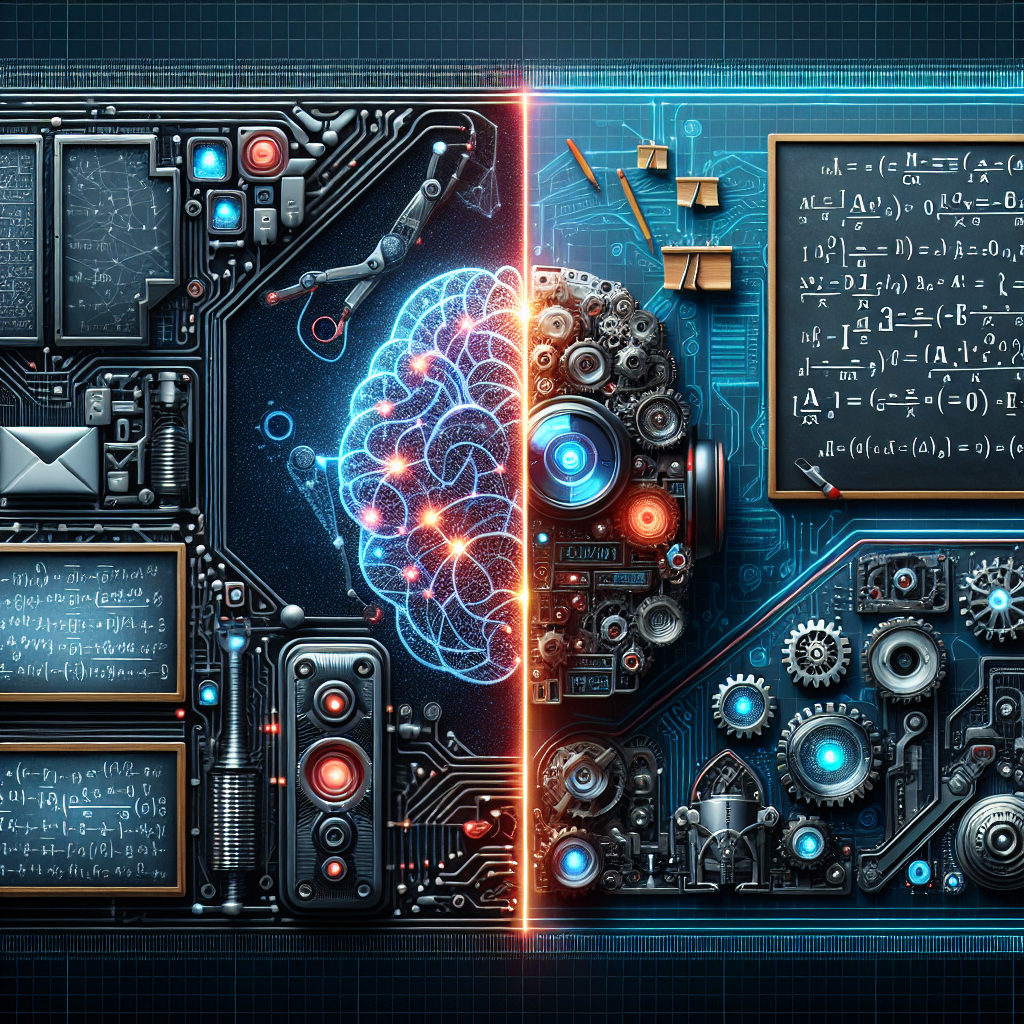AI vs ML: Which Technology is More Effective at Predictive Maintenance?
In today’s fast-paced world, businesses are constantly looking for ways to improve efficiency and reduce downtime. One area that has seen significant advancements in recent years is predictive maintenance. Predictive maintenance is the practice of using data and analytics to predict when equipment is likely to fail so that maintenance can be performed proactively, rather than reactively.
Two technologies that are commonly used in predictive maintenance are artificial intelligence (AI) and machine learning (ML). While both AI and ML are often used interchangeably, they are actually two different technologies that have their own strengths and weaknesses. In this article, we will explore the differences between AI and ML and discuss which technology is more effective at predictive maintenance.
Artificial Intelligence (AI)
Artificial intelligence is a broad field of computer science that focuses on creating machines that can perform tasks that typically require human intelligence, such as visual perception, speech recognition, and decision-making. AI systems are designed to learn from data, adapt to new inputs, and perform tasks without being explicitly programmed to do so.
In the context of predictive maintenance, AI can be used to analyze large amounts of data from sensors, equipment, and other sources to identify patterns and predict when equipment is likely to fail. AI can also be used to optimize maintenance schedules and identify the root causes of failures.
Machine Learning (ML)
Machine learning is a subset of artificial intelligence that focuses on creating algorithms that can learn from and make predictions or decisions based on data. ML algorithms are designed to identify patterns in data and make predictions without being explicitly programmed to do so.
In the context of predictive maintenance, ML algorithms can be used to analyze historical data on equipment failures and maintenance activities to predict when equipment is likely to fail in the future. ML algorithms can also be used to optimize maintenance schedules and identify the most cost-effective maintenance strategies.
Which Technology is More Effective at Predictive Maintenance?
When it comes to predictive maintenance, both AI and ML have their own strengths and weaknesses. AI is generally more flexible and can be used to perform a wide range of tasks, while ML is more specialized and focused on making predictions based on data.
In terms of effectiveness, both AI and ML can be highly effective at predictive maintenance when properly implemented. AI can be used to analyze complex data sets and identify patterns that may not be apparent to human analysts, while ML can be used to make accurate predictions based on historical data.
One key advantage of AI over ML is its ability to adapt to new data and changing conditions. AI systems can continue to learn and improve over time, making them well-suited for dynamic environments where conditions may change frequently. On the other hand, ML algorithms may need to be retrained or updated periodically to remain effective.
Another advantage of AI over ML is its ability to handle unstructured data, such as images, videos, and text. AI systems can be trained to analyze and interpret unstructured data sources, which can be valuable for predictive maintenance in industries where data comes in a variety of formats.
However, one advantage of ML over AI is its ability to make more accurate predictions based on historical data. ML algorithms are specifically designed to identify patterns in data and make predictions based on those patterns, making them well-suited for predictive maintenance tasks that involve large amounts of historical data.
In conclusion, both AI and ML can be effective at predictive maintenance, but the choice between the two technologies will depend on the specific requirements of the business and the complexity of the predictive maintenance tasks. AI may be more suitable for tasks that involve unstructured data and changing conditions, while ML may be more suitable for tasks that involve large amounts of historical data and require highly accurate predictions.
FAQs
1. What is the difference between AI and ML?
AI is a broad field of computer science that focuses on creating machines that can perform tasks that typically require human intelligence, such as visual perception, speech recognition, and decision-making. ML is a subset of AI that focuses on creating algorithms that can learn from and make predictions or decisions based on data.
2. How can AI and ML be used in predictive maintenance?
AI and ML can be used to analyze data from sensors, equipment, and other sources to predict when equipment is likely to fail. They can also be used to optimize maintenance schedules and identify the root causes of failures.
3. Which technology is more effective at predictive maintenance?
Both AI and ML can be effective at predictive maintenance when properly implemented. AI may be more suitable for tasks that involve unstructured data and changing conditions, while ML may be more suitable for tasks that involve large amounts of historical data and require highly accurate predictions.
4. What are some of the advantages of AI over ML?
AI is more flexible and can be used to perform a wide range of tasks. It can also adapt to new data and changing conditions, making it well-suited for dynamic environments.
5. What are some of the advantages of ML over AI?
ML algorithms are specifically designed to identify patterns in data and make predictions based on those patterns, making them well-suited for tasks that involve large amounts of historical data and require highly accurate predictions.

